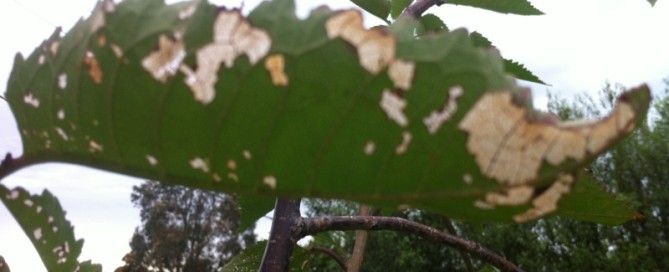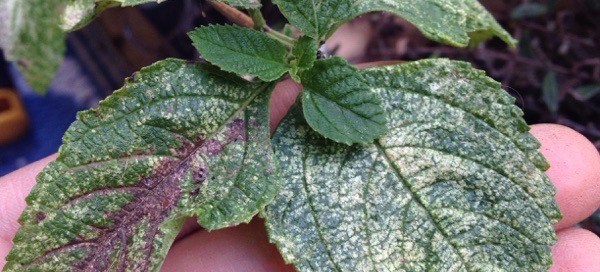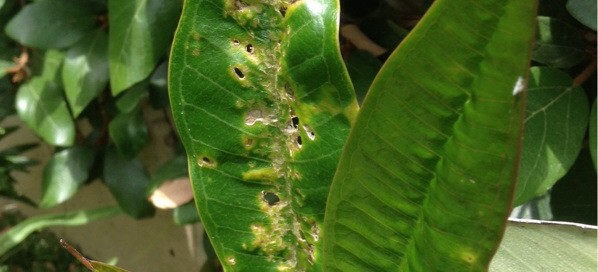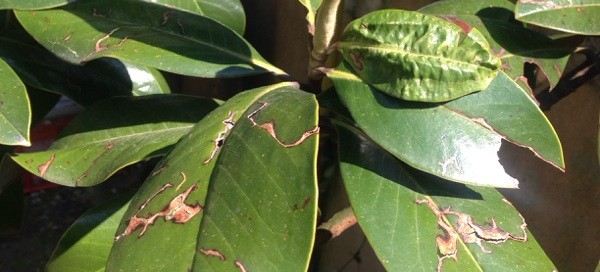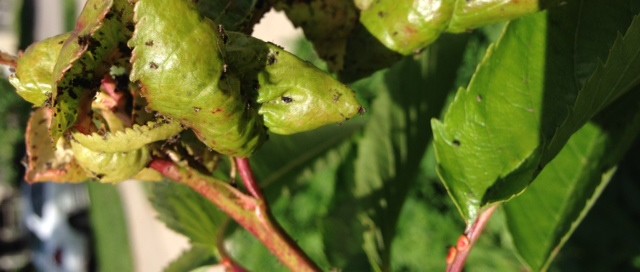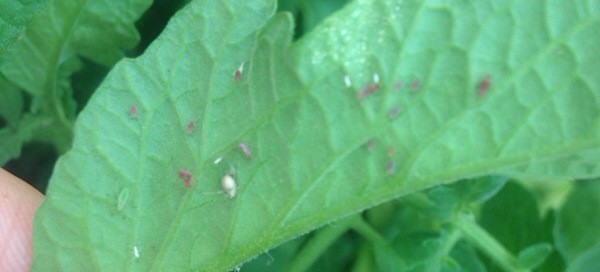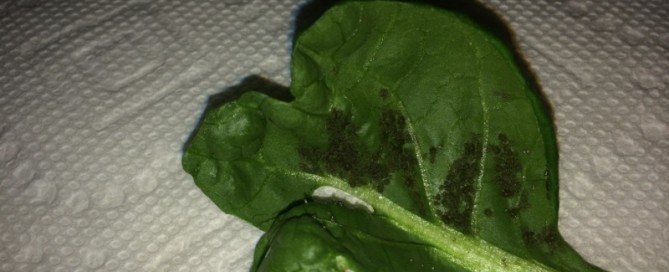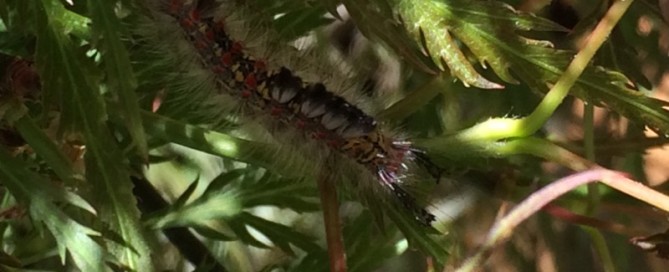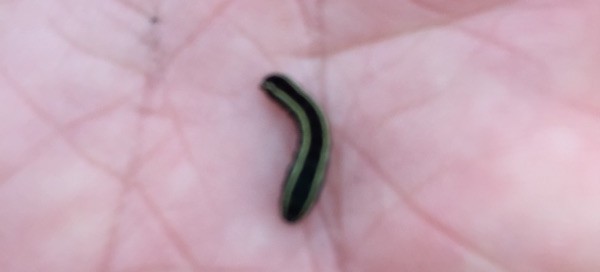Chewing Insect
The problem is likely chewing insects rather than sucking insects. Likely the caterpillar you saw or could also be some type of beetle or grasshopper? But without seeing the actual pest, we can't say for sure. Look to see if you see any sign of insects- top and bottom of leaves, day and at night with a flashlight (although the grasshopper may be long gone). If there are small black dots, these might be excretions for the insects. You can spray with an organic control effective against chewing insects such as Bt (caterpillars). insecticidal soap or Spinosad. Once the leaves and flowers are damaged, they will not recover but try to control future infestation. Bt is a contact insecticide and Spinosad has a 7-10 day residual. Spray Spinosad in the early evening after the bees have returned to their hives. Once the spray has dried on the plant it is safe for beneficials. Suggest you show your photo or perhaps capture a few in a bottle as well as snip off a damaged frond for a local garden center to confirm their identity.
